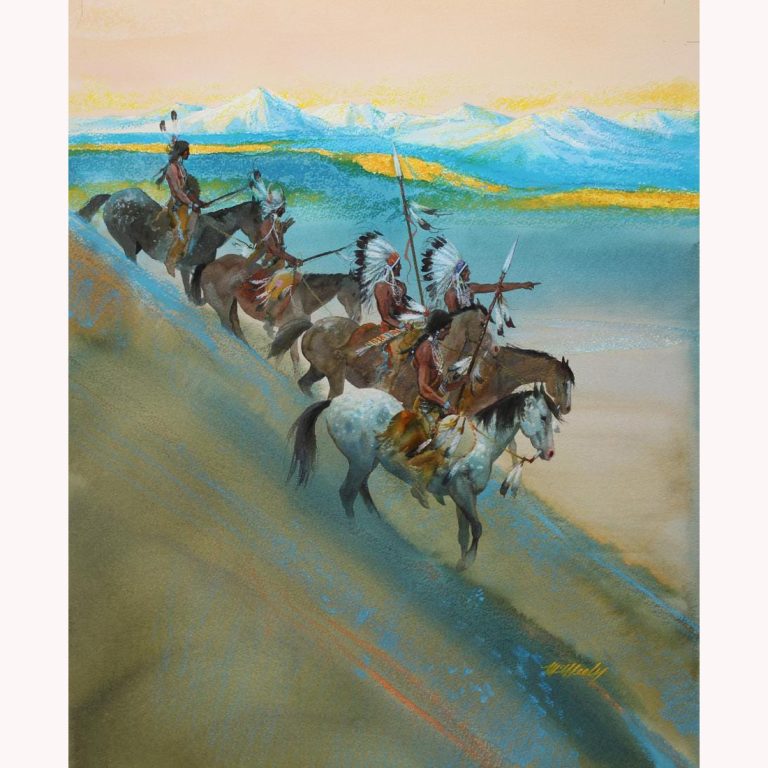Tom McNeely (B. 1935) “Flathead Headdress”

Tom McNeely (Canadian, B. 1935) “Flathead Headdress” Signed lower right. Original Mixed Media painting on Paper.
Provenance: Collection of James A. Helzer (1946-2008), Founder of Unicover Corporation.
This painting was published on the Fleetwood First Day Cover for the U.S. 25c Flathead Headdress stamp issued August 17, 1990.
Though many Indian tribes clashed time and again with the invading white men, early relations between whites and the Flatheads were generally friendly. This friendship was reflected in the headdresses of the tribe. Made from the tail feathers of a Golden Eagle, the headdress often contained products obtained in trade with the white man, such as wool, felt, beads and other items. Typically used only for very important events, the headdress was most often worn into battle with the tribe’s neighbors and traditional enemies, the Blackfeet. The Flathead Indians traded often with the white man, first in beaver pelts during the mountain man era, then in buffalo robes as the demand for beaver tapered off. The Flathead tribe also adopted Christianity, with a Jesuit priest, Father Peter John De Smet playing an important role in converting many. Among the early pioneers, the Flathead were thought to be intelligent, honest and peaceful. But this friendship also had its price: They were frequently decimated by a white man’s disease, smallpox. The first epidemic attack was in the 1770s and this was the beginning of a series of plagues that nearly wiped out the tribe. And for their initial friendship with the whites, the Flathead were reduced to poverty and finally driven out of their long-time home, the Bitterroot Valley of Montana. Consequently, relations with the whites declined and the erstwhile allies became foes.
Image Size: 26.75 x 21.5 in.
Click here to print.
go back
